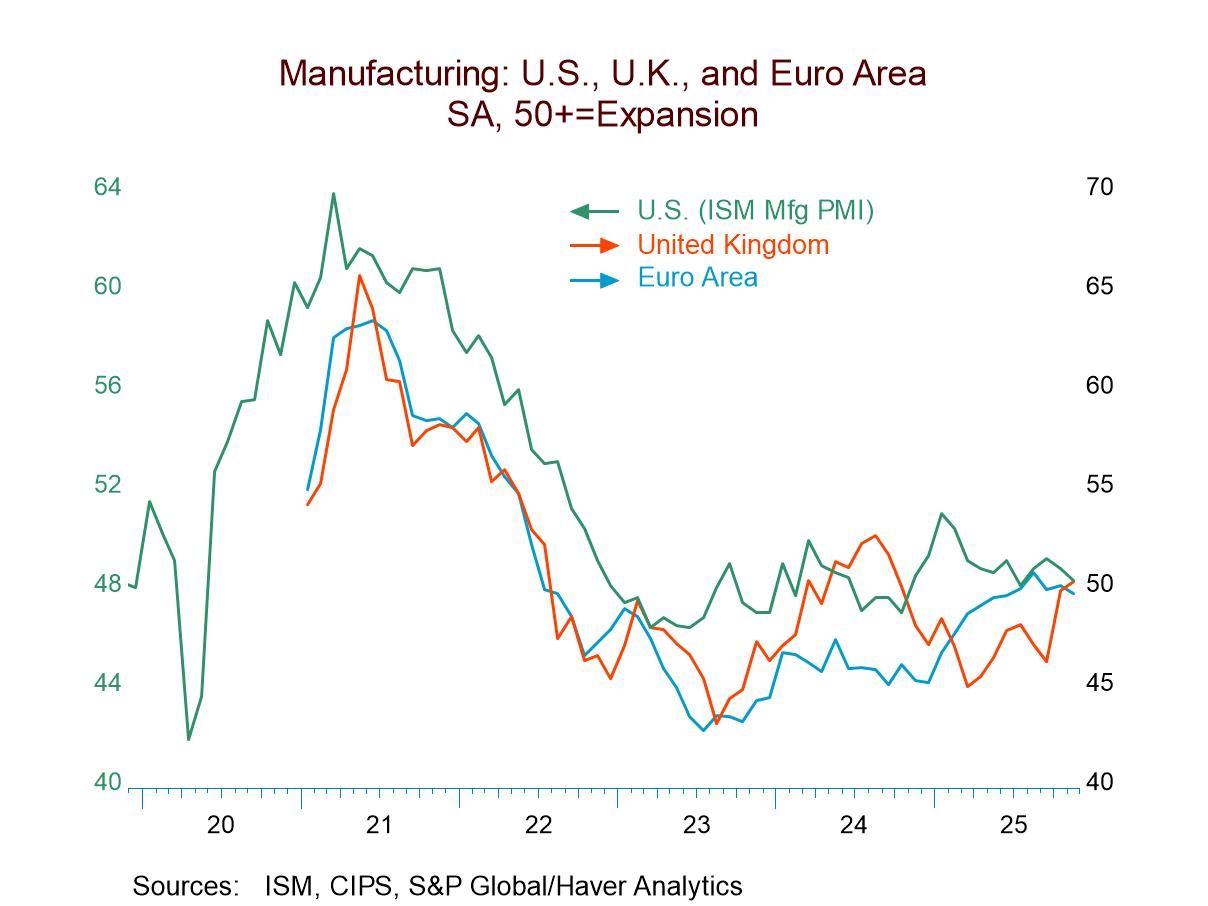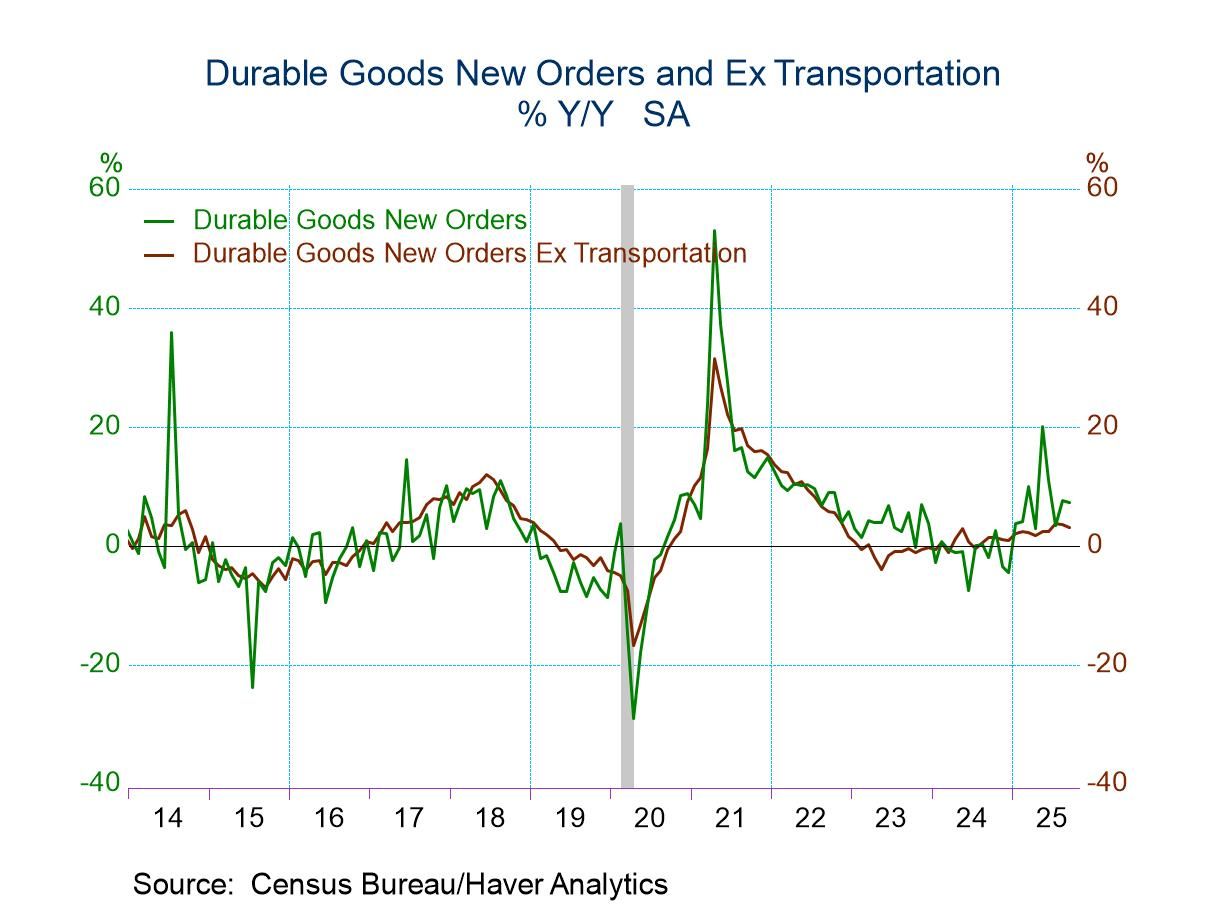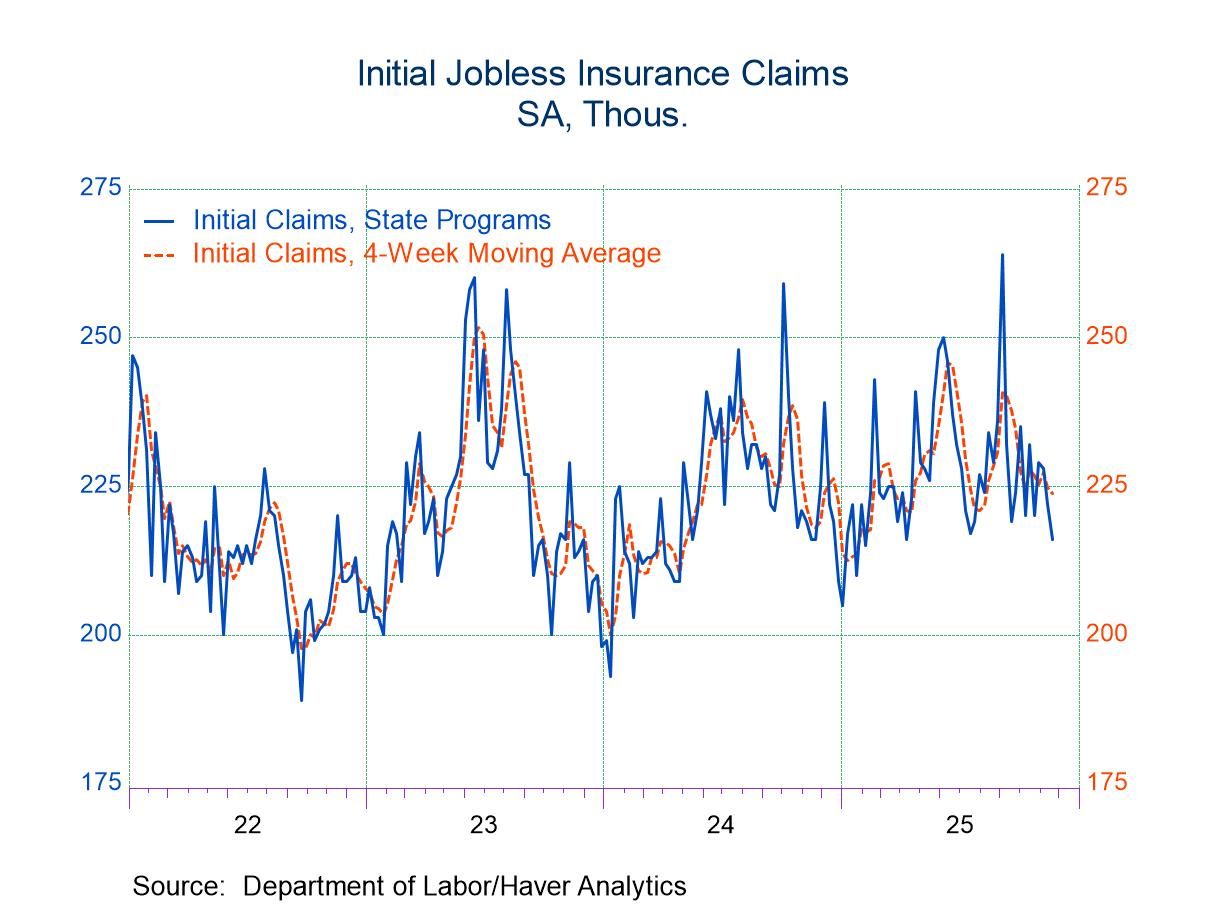 Global| Mar 13 2007
Global| Mar 13 2007U.S. Retail Sales Pose a Dilemma
Summary
With flat January retail sales and a 0.1% overall rise in February, retail sales have little lift in Q1. The February retail sales report, with no revisions to the main headlines over the past two months - an unusual development, [...]

With flat January retail sales and a 0.1% overall rise in February, retail sales have little lift in Q1. The February retail sales report, with no revisions to the main headlines over the past two months - an unusual development, leaves us with two months of a very flat consumer. This in turn raises questions about growth in the economy at large since it has been banking on continued consumer strength.
With the huge drop in durable goods orders the outlook for capital spending is poor. Housing started off the quarter looking good but has since beaten a deep retreat. With GDP= C+I+G+(X-M) the question is: where is growth coming from? Take “C” for example, consumption: the retail sales portion is flat for two months running. Services spending, the half of consumption that always slips in under the radar, is probably still firm. But the “I,” for investment has three weak prongs: Business fixed investment is weak if capital goods orders are to be believed; inventories have been pared back (they are up slightly in January); residential investment is that well known story of the ongoing lethargy in housing or worse. Government is usually a GDP positive but is plodding. The X-M portion of GDP (called net exports, or the GDP version of the current account in real terms) has provided some stabilization to GDP growth since imports (M) have been weak due to weak domestic demand and exports have held up as foreign growth has been firm. That combination produces a push to GDP; since imports are a subtraction and weak imports aid US GDP growth. But it’s clear that the economy will not grow for long on its international portion alone. While CEOs at the Round table last week expressed a desire for more capital spending, what we have in hand are weak trends. And that puts more of the focus back onto the consumer.
Q1 Consumption Arithmetic. Fortunately Q4 growth was ‘back-loaded,’ exporting momentum to Q1. Here’s how that works. Since GDP is a quarterly variable we look at its components by quarter and play the game, ‘what have you done for me lately?’ also known as ‘what will GDP be this quarter?’ What matters for each component is its average for the quarter. Since consumer spending spiked at the end of Q4, it left a high level of spending in December 2006. Thus even with next to no growth in January and February the level of spending in February is still 4.5% above the Q4 average. So overall nominal retail sales are up at a 4.5% nominal pace in 2007-Q1 as a result of the high pace of growth in December of 2006. But that crutch is becoming overused with the February weakness.
Cold weather did sucker-punch housing this months so we have a basis for believing there was a noticeable adverse weather effect in play. On top of that, as we know, housing is being battered by an ongoing retrenchment. We see both of these factors at work in the retail sales report in building materials where sales plunged by 1.4% in February alone. Sales also fell sharply for furniture and electronic goods. Motor vehicles sales were, however, strong with a rise of 1.0%.
Nondurables limped to a gain of 0.1% in February and were actually weaker excluding gas station sales that jumped by 1.2% (-0.1% for retail non-durables sales excluding gas station sales).
With the contribution in from the December sales spurt still in play, 3-mo sales trends are still reasonably firm (saar growth of 4.9%). But if monthly sales do not perk up soon the December effect will cease to help and retailing will then appear to be faltering. Come March, December’s gain will play against three month growth since we will then be measuring growth from the elevated December base and December’s strength will play against us - so far we have no lift from that point on.
Still, a sag in the winter months is not decisive. December sales were very strong, leaving fewer goods to clear out in January and February. February is a short month with myriad holidays leaving a lot of the work to be done by seasonal factors. Complicating this is the cold snap in March. Winter this year has been backloaded. March has come in less like lion than like a Polar Bear, let hope by month’s end we do not have bi-polar bear.
All this complicates getting a good look at how the economy is really doing. To be sure with business investment surprisingly weak, a pick up from the consumer is essential or the economy bears are going make another run for the money. It sure complicates the Fed’s job especially with poor trends in productivity, labor costs and labor compensation. For now we can only watch and wait and hope that the slow growth is a product of bad weather.
| M/M | Seasonally Adjusted Annual Rate|||||
|---|---|---|---|---|---|
| Feb 2007 | 3-month | 6-month | Yr/Yr | Yr Ago: Y/Y | |
| Retail Sales & Food Services | 0.1% | 4.9% | 1.6% | 3.2% | 7.5% |
| Excluding MV & Parts | -0.1% | 4.9% | 0.7% | 3.1% | 9.4% |
| Excluding MV & Parts & Gas | -0.3% | 3.0% | 3.0% | 3.4% | 8.4% |
Robert Brusca
AuthorMore in Author Profile »Robert A. Brusca is Chief Economist of Fact and Opinion Economics, a consulting firm he founded in Manhattan. He has been an economist on Wall Street for over 25 years. He has visited central banking and large institutional clients in over 30 countries in his career as an economist. Mr. Brusca was a Divisional Research Chief at the Federal Reserve Bank of NY (Chief of the International Financial markets Division), a Fed Watcher at Irving Trust and Chief Economist at Nikko Securities International. He is widely quoted and appears in various media. Mr. Brusca holds an MA and Ph.D. in economics from Michigan State University and a BA in Economics from the University of Michigan. His research pursues his strong interests in non aligned policy economics as well as international economics. FAO Economics’ research targets investors to assist them in making better investment decisions in stocks, bonds and in a variety of international assets. The company does not manage money and has no conflicts in giving economic advice.






